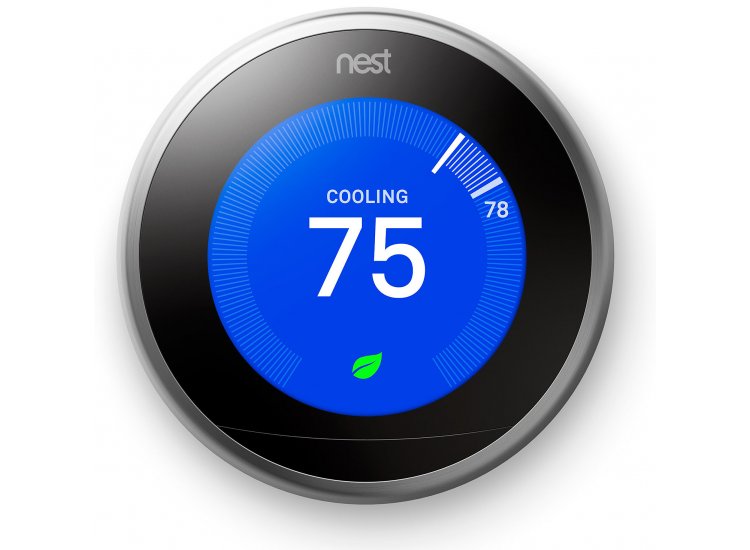The thermostat, a heat-sensitive switch, is the basic control that regulates the temperature of your home.
It responds to changes in the temperature of the air where it is located and turns the furnace or air conditioner on or off as needed to maintain the temperature at a set level, called the set point. The key component of the thermostat is a bimetallic element that expands or contracts as the temperature increases or decreases in a house.
Older thermostats have two exposed contacts. As the temperature drops, a bimetallic strip bends, making first one electrical contact and then another. The system is fully activated when the second contact closes, turning on the heating system and the anticipator on the thermostat. The anticipator heats the bimetallic element, causing it to bend and break the second electrical contact. The first contact is not yet broken, however, and the heater keeps running until the temperature rises above the setting on the thermostat.
More modern thermostats have coiled bimetallic strip elements, and the contacts are sealed behind glass to protect them from dirt. As the temperature drops, the bimetallic elements start to uncoil. The force exerted by the uncoiling of the elements separates a stationary steel bar from a magnet at the end of the coil. The magnet comes down close to the glass-enclosed contact, pulls up on the contact arm inside the tube, and causes the contacts to close, completing the electrical circuit and turning on the heater and the anticipator. As the air in the room heats up, the coil starts to rewind and breaks the hold of the magnet on the contact arm. The arm drops, breaks the circuit, and turns off the system. As this point, the magnet moves back up to the stationary bar, keeping the contacts open and the heater turned off until the room cools down again.
The latest heat and air-conditioning controls use solid-state electronics for controlling the air temperature. They are typically more accurate and more responsive than older systems. However, repair to solid-state controls usually means replacement.
Understanding how the heating and cooling systems function in your home will help you head off problems before they become too serious.


